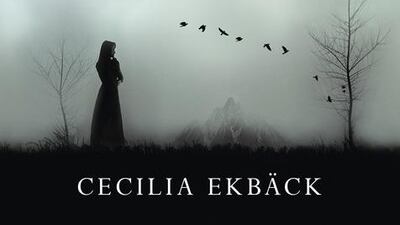Wolf Winter opens in deep summer. In Swedish Lapland in June 1717, the fictional Blackasen Mountain stands at the heart of a world of mysterious disappearances, of strange rumours, of threatening forests and vast skies. Its inhabitants live in quiet fear, haunted by tales of a sinister history, unable to shake themselves of the feeling that their landscape, and those who inhabit it, might be cursed. It is a liminal land, a liminal time: a place of certainty and doubt, of new ideas and ancient convictions.
And of new faces, too. Maija, Paavo and their two daughters – Frederika and Dorotea – have recently left their life in Ostrobothnia, Finland, to take up residence in the Blackasen homestead (long vacated) of Paavo’s uncle, Teppo Eronen. The once “solid” Paavdo has, ever since he proposed to Maija, been suffering night terrors, which have become so disruptive as to keep him from his work as a fisherman, and to establish in him a dread so potent that “he could no longer bear the sight of water in the washbasins in the house”. It is in an attempt to escape this suffering that the family resolves to start a new life in Blackasen.
When we join them a few days into their new existence, it is made clear that the attempt is doomed – that here, as Frederika reflects, “nothing could be fine”. And so it proves: two pages later, Frederika and Dorotea happen upon the corpse of a fellow member of the community, his stomach “torn open, his insides on the grass violently red, stringy”. They fetch their mother, who toys with the idea that the perpetrator might have been a wolf, then swiftly dispenses with the theory in favour of the view that the murderer must be human, a resident, perhaps, of Blackasen itself.
What follows is an effort to uncover the meaning of the murder and the identity of its perpetrator, that raises questions about every member of the community: about the vain and taciturn and initially untroubled priest; about the silent Gustav; about the victim’s widow, Elin, once tried for sorcery; and about the victim’s brother, Daniel, who laughs when he hears his sibling is dead.
Ekbäck tells this story from the perspective of the priest, Maija, and Frederika. At times the narrative has a frustrating tendency to eddy rather than build, but when this does happen, there remains plenty to admire in the freshness of perception that is to be found in her prose, particularly when she is writing with care. Her description of fellow settlers working in the distance (“The figures on the marsh seemed to have risen from the mud”) is wonderfully vivid. And in Frederika’s recollection of how, when her father used to row, “the river poured from his lifted oars with the sound of waterfalls”, the ocular and auditory elements of the description are exact: we see the oars and hear the waterfalls with her, and we remember them both.
Not all of Ekbäck’s prose is this precise, and one wonders if she has worked sufficiently hard to bring the backdating of the novel (three previous drafts were set in 2005, 1930, and 1865) wholly to life. For while there is plenty of interesting and apposite detail about daily activity in the 18th century, at times the language of the book can feel if not exactly anachronistic, then at least carelessly deployed: when we hear of “an image jolting her like a penknife prick in her chest”, we are invited to think not of the needling of a blade but of an electrical convulsion. Elsewhere, there is a determination to see the environment anthropomorphically, to employ a version of the pathetic fallacy (land doesn’t “know how to let go”; stone is “angry”; we hear that “the forest watched him, but didn’t warm to him”), that feels at odds with certain characters’ experiences of the world, and a strained and unintegrated way of trying to generate atmosphere.
A more considered approach to these elements would have made of this book a more complete, and more completely convincing, novel. But these are relatively minor complaints. Overall, Wolf Winter amounts to a memorable, absorbing and disquieting novel about fear, the longing for home, the immanence – and the imminence – of death that, at its best, plants the reader in the condition described by its title: in a winter that insists the deaths of others are to do with all of us, and reminds us we are mortal and alone.
Matthew Adams is a London-based reviewer who writes for TLS, The Spectator and the Literary Review.
This book is available on Amazon.
thereview@thenational.ae

